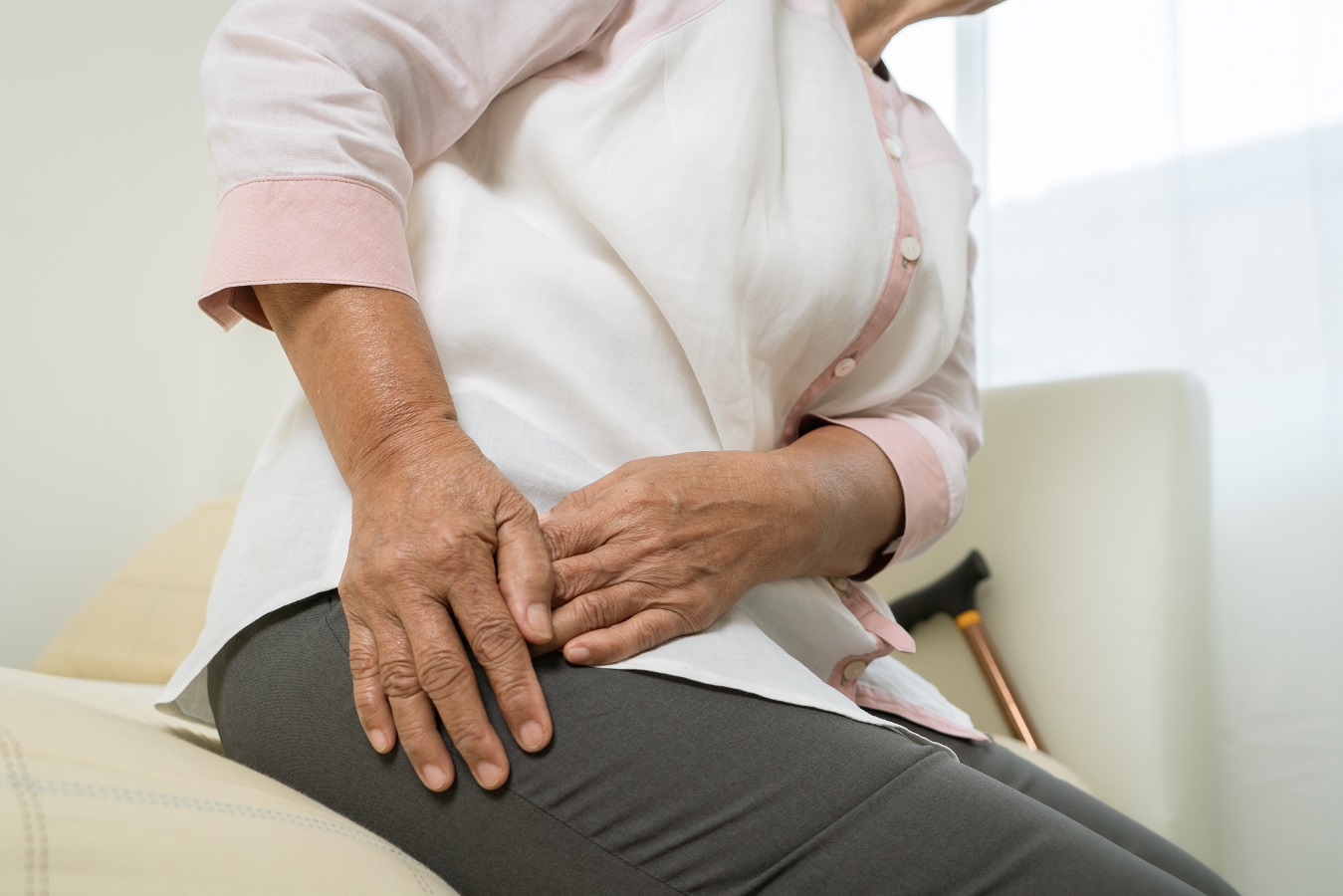5 Treatment Options for Hip Osteoarthritis

Overview
The meeting point of two bones is a joint. To reduce friction and enable smooth movement of the joint, the bones are covered in a tissue called cartilage. In a patient suffering from osteoarthritis, this cartilage wears away, and the bones meeting at the joint rub against each other, paving the way to pain and stiffness.
Causes include:
- Aging
- Injury to the bone
- Obesity
- Defects in bone structure
- Genetic predisposition
Osteoarthritis can have an impact on any joint of the body; however, the hip and knees are more commonly affected.
Hip Osteoarthritis: Treatment Options
From weight reduction to surgery, treatment options vary depending on how far the disease has progressed.
1. Maintaining Ideal Weight
- Overweight individuals have a higher chance of developing osteoarthritis as the pressure exerted on the joints is more.
- Keeping the BMI within the normal range goes a long way towards preventing this condition.
- If a person is already suffering from hip osteoarthritis, being overweight can increase the pain and inflammation. The joints will also wear away faster.
- The doctor will guide the patient on dietary changes and exercise options.
- Even a little weight loss will benefit the patient.
2.Medication and Walking Aids
In addition to recommending dietary changes, the doctor will also help with pain relief.
- For managing pain, painkillers like ibuprofen, acetaminophen, etc. will be prescribed.
- Sometimes, if the pain is severe, steroid injections will be administered.
- However, the pain relief from these injections is not long-lasting. As there are risks associated with their prolonged use, these injections will be given with a lot of care.
- Using aids like a walker or a walking stick will not only serve to ease the pressure off the hip joint but will also improve stability and prevent falls.
- While choosing a walking stick, select one that can be gripped without bending to reach it.
- Hold the stick on the side that is opposite to the side experiencing the pain.
- Do not hold the stick very far away as it might lead to imbalance and a possible fall.
3.Staying Physically Active
Regular exercise forms an important part of a hip osteoarthritis treatment plan.
- Consistent activity can prevent osteoarthritis.
- For a person already suffering from the condition, learning and performing joint strengthening exercises will fortify the muscles near the joint and afford pain relief.
- Your physiotherapist will teach you how to perform these exercises in the correct manner.
- Done regularly, the patient will definitely feel the benefit of these exercises in the form of pain relief and improved flexibility.
- Consult your orthopedic doctor before starting any activity. Low-impact activities like walking, swimming, yoga, etc. are ideal.
- If you haven’t been physically active in a while, it would be best to start slowly. Don’t overdo.
- Stop when you experience pain. Take a break and resume after the pain goes away.
- Performing appropriate stretching exercises will help in pain relief.
- As you become comfortable with the activity, you can slowly increase the intensity.
- Exercising might be difficult initially. But persevere. Consult the doctor if you have any doubts or fears.
4.Surgical Options
If the above modifications do not yield the expected results and the pain increases to debilitate the patient, the doctor will suggest surgery to relieve pain, resume mobility, and improve quality of life.
Surgical options include hip resurfacing and hip replacement.
- Hip resurfacing is suggested for people below 60 years of age.
- The hip joint is a ball and socket joint with the ball end of the femur fitting into the socket of the hip.
- During the procedure, small incisions are made to access the joint.
- The damaged portions of the bone and cartilage alone are removed.
- A metal cap is then positioned on the head of the thighbone. A metal shell is placed on the socket it fits into.
- The joint can then move freely without friction.
- Thus, in hip resurfacing, the bone is retained as much as possible.
- Hip resurfacing surgery will also reduce the chances of a hip dislocation.
- Unlike in hip resurfacing where only the damaged parts of the joint are removed, in hip replacement, the total head of the thigh bone and the socket of the hip joint are replaced with prosthesis.
- Hip replacement can be done arthroscopically or as open surgery.
- Whichever the procedure, physiotherapy after surgery is essential to regain mobility.
5.Lifestyle Modifications
Small day-to- day modifications go a long way towards prevention and pain relief. A person who is debilitated by hip arthritis may also need mental support. Lifestyle changes will also help a person remain mentally strong and reduce the risk of anxiety/depression.
- Make healthy food choices. The right food options can make people feel good about themselves and contribute to weight loss as well.
- Eat lots of fresh fruits and vegetables.
- Reduce sugar intake. Patients have reported inflammation of the hip joint after consuming food rich in sugar. Ask your doctor for sugar substitutes.
- Increased salt consumption leads to water retention in the cells, and they bloat. Salt is of course necessary but in moderation because too much salt can also trigger inflammation.
- Deep-fried food is best avoided as they too bring about inflammation.
- White flour (maida) in your diet can cause increased pain.
- Get adequate sleep. Rest if pain is more than usual.
- Manage stress by indulging in activities that make you happy. Music and meditation are ideal options.
- Stop smoking and avoid alcohol. This will give you better immunity, prevent joint inflammation, and contribute to an overall better health.
